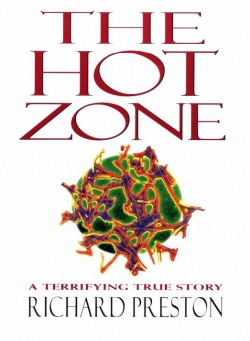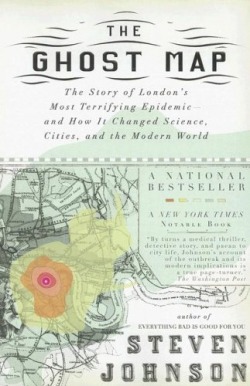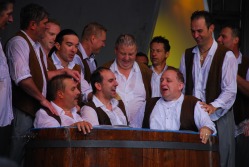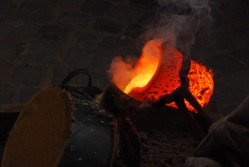

I have a confession: for a long time, I was pretty unclear on what public health, much less epidemiology, actually was. Given the state of public health in the media (you only hear about it when something goes horribly wrong...), it's not all that surprising. However, we have public health to thank for many of the things that we currently take for granted - like the idea that smoking is dangerous and the elimination of many once-dreaded childhood diseases like measles and polio. My interest in the field of public health in general, and epidemiology in particular, began when I read Richard Preston's The Hot Zone and I continued to be inspired by popular accounts of how epidemiology interacts with modern life in very hidden ways.  If you think that you might have even a passing interest in public health, I encourage you to check out the two books above. They each highlight why epidemiology is such a fascinating field, but they approach it from two different directions. My favorite of the two is The Hot Zone, which follows the US Army's attempt to contain an Ebolavirus outbreak (yes, that Ebola) in Reston, VA (yes, the one next to Washington D.C.). The book has some fairly surreal scenes - like an army clean-up unit staring at a busy playground while the suit up to enter an infected monkey house in secrecy - and it may or may not have contributed to a slightly romanticized view of what epidemiologists actually do (sadly, so far we've not been mobilized to contain any outbreaks and I've not had to run tests on infected monkeys). But the book does highlight the extraordinary level of surveillance that our public health officials must maintain and the variety of situations that they need to be prepared to handle.  Stephen Johnson's The Ghost Map takes a different approach to public health - how it can be used to clean up after a disaster. In the mid-19th Century, people began flocking from the countryside to the city, creating the lifestyle that most of us now take for granted. The population of most major urban centers exploded, and to borrow a phrase from Johnson, London was "... a Victorian city with an Elizabethan infrastructure." The recent conquest of India brought a different kind of immigrant to England's capital - Vibrio cholerae, a nasty bacterial species that causes cholera, which produced extremely severe diarrhea. From 1853-54, a cholera outbreak killed 10,000 people in London, and The Ghost Map tracks how the cause of this disease was discovered and how the later public health improvements helped create what we think of as modern urban infrastructure. Both books are great reads, especially if you think you might be interested in this thing called "public health" - and yet they only scratch the surface of one aspect of one part of one discipline of the whole. There's lots more good books out there - The Coming Plague comes to mind, and I'm sure that some of you may have suggestions of your own.
0 Comments
 Johannisnacht is a relatively new festival - it's only been held since 1967 - but it reaches back to Mainz's history, especially that of its most famous son, Johannes Gutenberg. After the invention of the printing press, an entire industry sprang up around printing, complete with a printer's guild and the necessary apprentices. Upon completion of their training, the apprentices would be dunked in water in a ceremony known as "Gautschen", which was supposed to "ritualistic cleanse of the impurities they had commited during their time as apprentices" (it would seem that some things never change) - but was really just taken from the old custom of depostion. Once the apprentices had been dunked, they received a certificate confiming that they had gone through the process to ensure that they wouldn't have to repeat it. When the traditional methods of printing books started to fall by the wayside, the "Gautschen" went with it - until Johannisfest was started. The Gautschen serves as one of the festival's high points, and the organizers take great pains to make it seem "authentic" - from the man dressed in period costume reading the names off the list to the certificates given out to the dunkees at the end of the day. Interestingly, the term "apprentices" has adapted to the changing times and now includes those who complete an apprenticeship in any form of media - from newspapers to radio to television. In a gratuitously crowd-pleasing addition, any teacher found in the audience will be hauled up on stage and ceremoniously dunked in the bucket. This ceremony used to be one of many different events - but in 2005 they scrapped the jousting competition that they held in the middle of the Rhine. Other than these main events, the festivalis a fairly typical German city festival, sort of like what Oktoberfest used to be. One high point is the overly amazing used book fair - I could have spent way more time there looking through all that they had to offer - from antique maps showing Hannibal's march over the Alps to an 1850's printing of Plato's Phaedrus for Greek students to good, cheap copies of classic German novels. If the books got to be too much, you could recuperate with the dozens of wine stands and listen to cover bands playing classic rock (ZZ Top, Deep Purple, and a great Led Zepplin cover).  In addition to rides, food and drink stands, and stalls hawking a rather odd variety of wares (everything from old advertisement placards to African folk art) there was a surprising exhibition set up in front of the Gutenberg Museum - a delegation from a traditional printing workshop in South Korea set up an interactive display where you could make paper, use traditional printing methods to print Korean characters onto these pages, and then try your hand at traditional book-binding techniques to turn the finished product into a book. And if all that weren't enough, the craftsmen also held regular demonstrations where they would cast the printing blocks out of molten lead - I was amazed at how quickly they were able to produce new characters (it took about 15 minutes to make 8 new ones). It was a very interesting exhibit, and helped to ground the book-printing process somewhere in reality for me. It's all too easy to forget just how much work goes into printing a book and especially to lose touch with it's rich history and traditions - and reconnecting with that process is what Johannisfest (at least partly) is supposed to be about.
One of my favorite things about Germany is the fact the bookstores are everywhere and books are fairly cheap (about $12 for a trade paperback and about $16 for a new hardcover, regardless of size) - Germany is the world's 2nd largest book market after the United States, and they end up translating pretty much everything - so much so that if you're looking for a book written in language other than English, you're more likely to find it in German than English. Given my tendencies toward bibliophilia, this is both a blessing and a curse. In case you happen to be interested, I thought I'd share the two that I'm currently reading.  Städte der Welt (Cities of the World)  Die Vermessung der Welt (Measuring the World) |